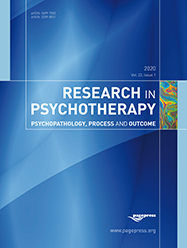The indirect effect of a focus group for psoriatic patients on their caregivers

All claims expressed in this article are solely those of the authors and do not necessarily represent those of their affiliated organizations, or those of the publisher, the editors and the reviewers. Any product that may be evaluated in this article or claim that may be made by its manufacturer is not guaranteed or endorsed by the publisher.
Authors
Psoriasis is a chronic skin disease involving not only epidermic damages but also psychological distress for patients and their family caregivers. Little is known about the effects of a psychological support for psoriatic patients on their caregivers’ well-being. The goal of the present study was to investigate the indirect effects of the participation in a dynamic focus group reserved for psoriatic patients on their caregivers in terms of quality of life. The study involved 52 psoriatic patients and 41 family caregivers. Patients’ wellbeing was assessed using the dermatology quality of life index, hospital anxiety and depression scale. The impact of the disease on caregivers was assessed using the family dermatology life quality index (FDLQI). Data were analyzed with linear mixed models. The caregivers of psoriatic patients involved in the psychodynamic focus group reported levels of FDLQI that decreased over time, therefore showing an improvement in their quality of life in relation to the pathology of their relatives; the caregivers of patients who did not participate in the psychodynamic focus group, instead, had levels of FDLQI that were stable over time. The results provide preliminary evidence that the group setting of the Psychodynamic Focus Group may alleviate the negative impact of psychosomatic disease on the caregivers.






